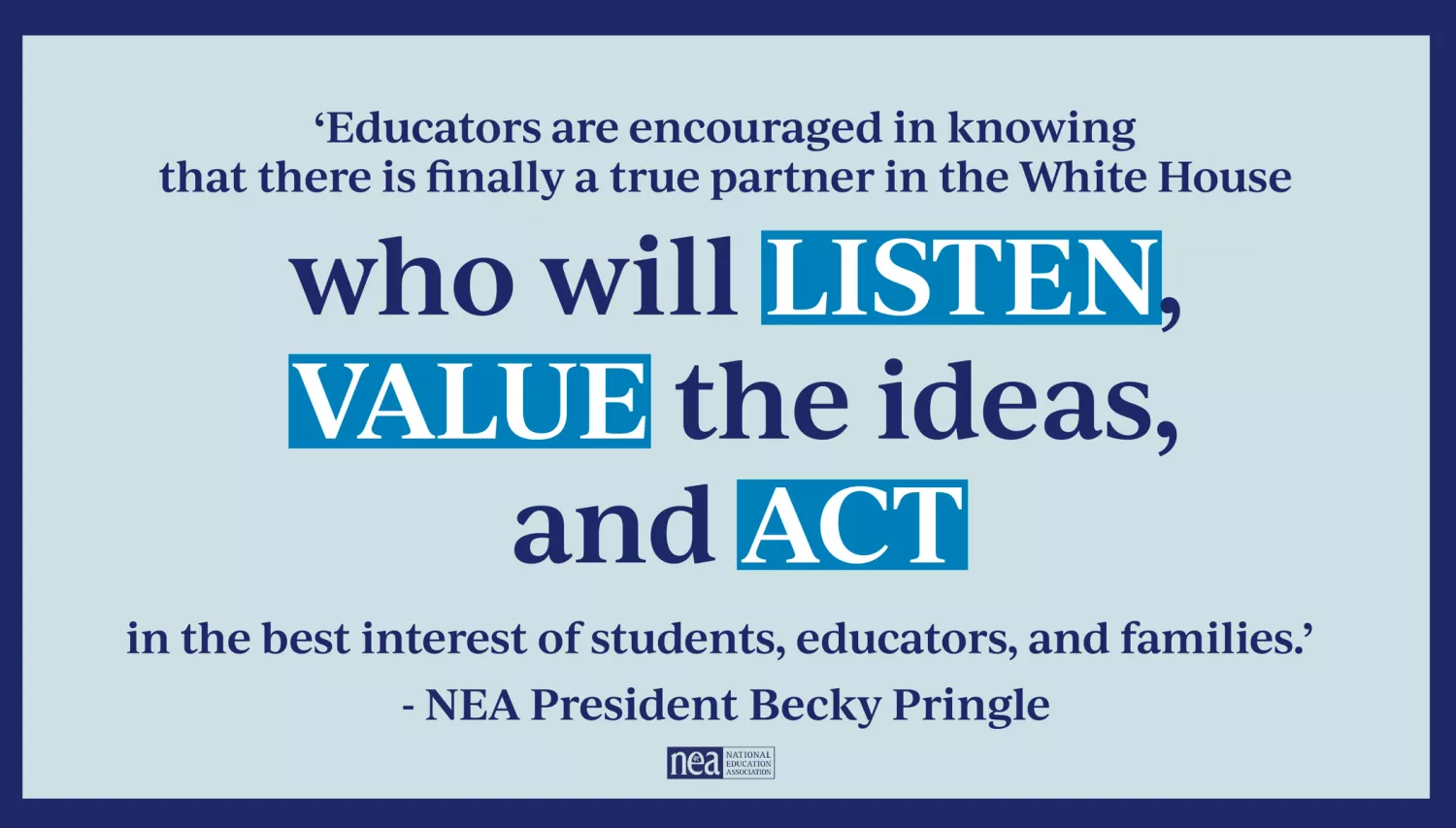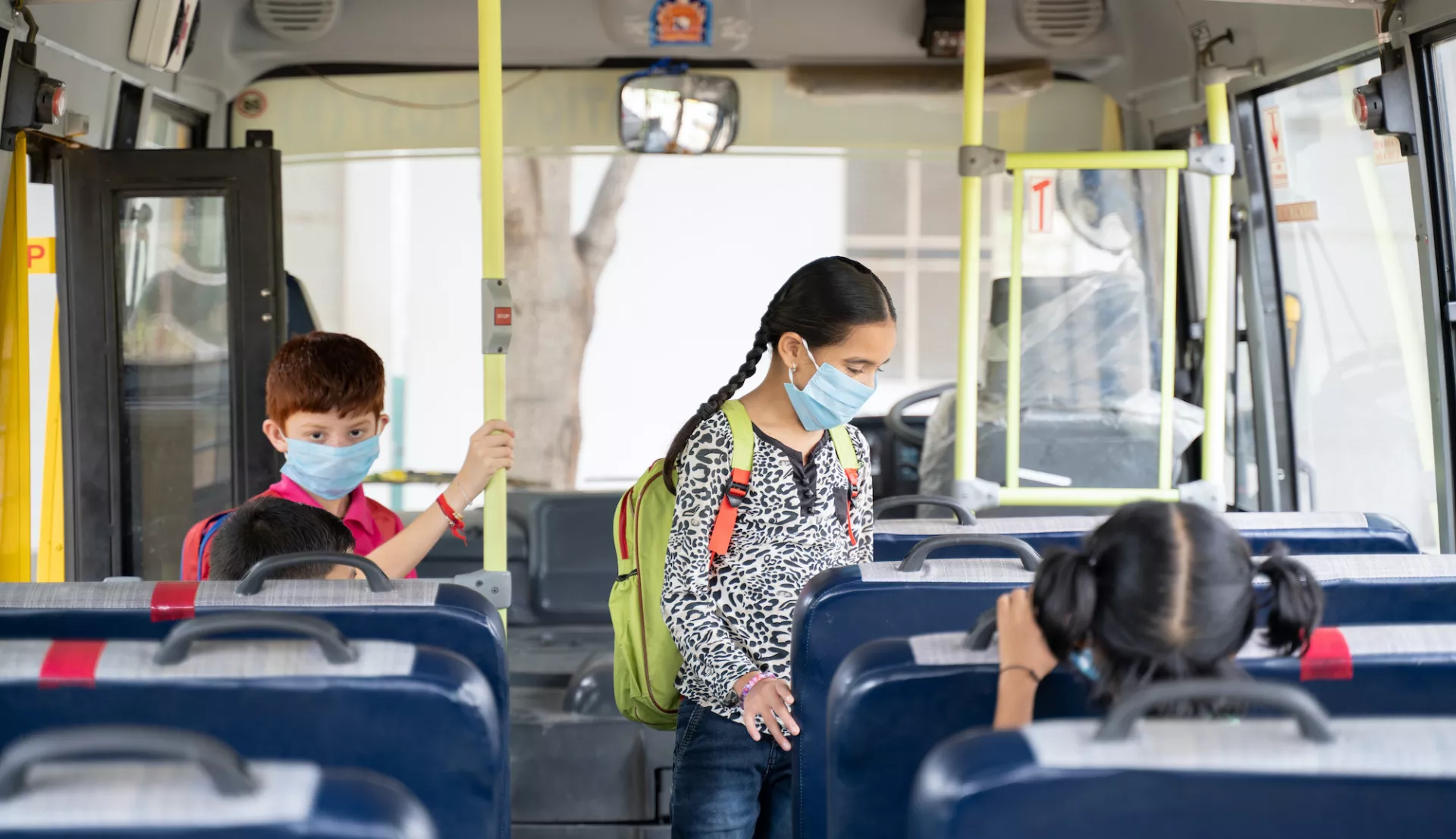President-elect Joe Biden unveiled an ambitious plan on Thursday to help the nation emerge from the economic and public health wreckage that has devastated millions of lives across the country over the past ten months. He called on Congress to provide the necessary investments to help reopen schools safely, save educator jobs and attack the crippling inequities the COVID-19 pandemic has exacerbated.
These proposals are key components of the American Rescue Plan, a $1.9 trillion emergency legislative package. Biden delivered the speech one day after the United States reported 4,320 COVID-19 fatalities – the highest daily toll yet. “The crisis of deep human suffering is in plain sight and there’s no time to waste,” Biden said. “We have to act and we have to act now.”
The plan has three primary goals: a national vaccination plan that will contain the virus, deliver emergency relief to working families and support communities hardest hit by the crisis.
The vaccination rollout so far, said Biden, has been a “dismal failure,” riddled by poor communication and coordination. Thus far only roughly 37% of the shots distributed nationwide have been administered according to the U.S. Centers for Disease Control and Prevention. The goal now will be to administer of 100 million dosages in the first 100 days of his administration – one of the “most challenging operational efforts we have undertaken ever as a nation.”
In announcing his stimulus proposal, Biden said safety and mitigation to control the virus was a top priority, pledging $20 billion for vaccine distribution as well as $50 billion for coronavirus testing. Increasing the supply of the vaccines and providing greater supports for our public health systems and schools means more schools will be able to reopen safely.
Biden promised to do "everything we can to keep our students and educators safe," with the goal of reopening the majority of K-8 schools by May 2021.
“We can do this if we give the schools, the districts, the communities and the states the clear guidance they need, as well as the resources they need that they can’t afford right now because of the economic dilemma they’re in,” Biden said.
Biden is also pledging $130 billion to support a reopening plan for K-12 schools - funds that can be used to reduce class sizes and modify spaces to comply with social distancing, modernize HVAC systems, hire more school custodians and nurses and counselors and facilitate social distancing on transportation services with more buses and more drivers.
The American Rescue Act would also direct $35 billion to public institutions of higher education to assist in the implementation of safety protocols, distance learning programs and emergency financial assistance for millions of students.

These are encouraging words to the nation’s educators who have been performing their jobs over the past year in deeply challenging circumstances, said NEA President Becky Pringle, even as the nation’s leaders ignored their voices while doing little to stop the spread of COVID in communities and in public schools.
“No one wants to return to in-person learning more than the educators who dedicate their lives to helping their students succeed,” Pringle said. “Educators are encouraged not only by President-elect Biden’s leadership, but also in knowing that there is finally a true partner in the White House who will listen, value the ideas, and act in the best interest of students, educators, and families.”
Since the outbreak forced the closure of the vast majority of schools, NEA has advocated that any reopening model had to not only ensure the health and safety of students and staff, but also prioritize long term strategies on student learning and educational equity. The pandemic has affected everyone, but it has been particularly dire in rural areas and communities of color, where economic hardships and limited access to health services have led to higher infection and death rates and steeper and more permanent job losses.
“As educators, we have long stood in the gaps where our institutions and policymakers have failed our students – dedicating our lives to helping them succeed when others have overlooked or ignored their needs,” Pringle said. “We see firsthand how issues such as hunger and housing insecurity impact our students and their ability to learn, and we see how the economic crisis has impacted them and their families particularly in rural urban, and poor communities.”
From ensuring equitable distribution of vaccines and supplies to expanding health care services to providing financial relief for working families and supporting small businesses owned by entrepreneurs of color, alleviating this suffering is a central tenant of the Biden plan.
Biden is also proposing $350 billion in emergency funding for state, local, and territorial governments to protect essential workers, including educators, from further lay-offs. Roughly 280,000 education jobs were lost between August 2020 and September 2020 - for a total of 835,700 educators laid off or furloughed during the pandemic. A 2020 NEA analysis projected that nearly 2 million education jobs could be lost over the next three years if Congress does not act to protect state and local economies.
“Our emergency rescue plan will keep these and other essential workers on the job," Biden said. "We cannot watch nurses and educators and others lose their jobs. We must act now and decisively."
The COVID relief bill signed into law in December, while providing some level of financial relief for educators and students in K-12 schools and higher education, did not include this critical investment to protect essential public workers. As Biden said on Thursday, that bill was fine, but it was merely a “down-payment.” The time to go big is long overdue.
“If we invest now – boldly, smartly, and with unwavering focus on American workers and families, we can strengthen our economy and reduce inequity.”


